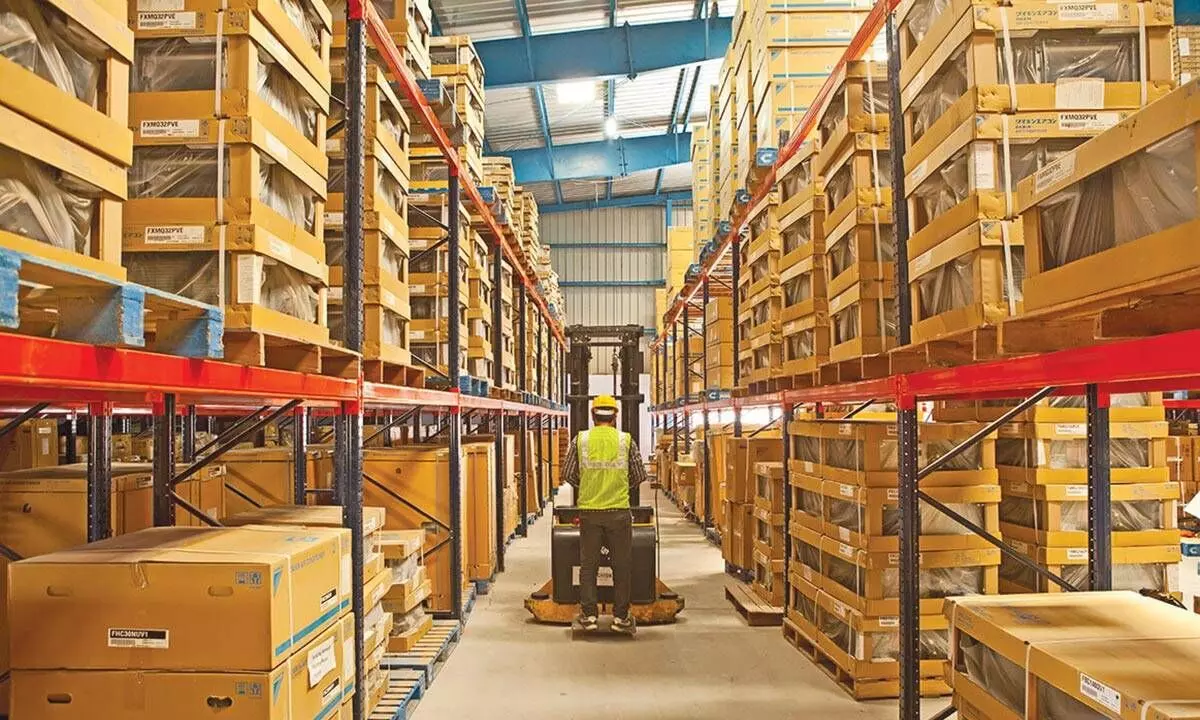Centre should add zest to warehousing sector’s growing vibrancy
image for illustrative purpose

Things seem to be looking up for the warehousing sector in India. The logistics and industrial sector in the country has shown tremendous resilience post-Covid and sector analysts foresee an upward bias on rentals in select markets. Going by the latest JLL study, the cumulative Grade A and B supply in the warehousing and industrial sector is expected to be around 516 million sq. ft. by 2026. The supply of leasing stock reached 344 million sq. ft. in H12023. Nearly 15 million sq. ft. of new stock were added in H1 2023 with Delhi NCR, Mumbai and Bangalore taking the lion’s share. After all, warehouse is a fundamental part of business infrastructure and an enabler in the global supply chain. Over a period of time, there has been a tremendous transformation; the generally presumed ‘unorganized godown structures’ are now a ‘prominent asset class’. It proved its resourcefulness during the boom in organized retail, when new regulatory measures were put in place and during the Covid pandemic. Braving adversities, the sector deftly handled the growing demand when the whole nation was under a lockdown. Not surprisingly, the demand for warehouses in the top eight cities touched a record high of 51.3 million square feet (MSF) in 2022-23 (FY23). The Indian warehousing market, which was valued at Rs 1,206.03 billion in 2021, is expected to reach Rs 2,872.10 billion by 2027, expanding at a CAGR of nearly 15.64 per cent during the 2022-2027 period.
Demand for warehouses has increased and the strong deal pipeline points to a record-breaking net absorption of 42.5 mn square feet in 2022 compared to 39 mn sq. ft. in 2021. Nearly 60 per cent of the modern warehousing capacity is found in Ahmedabad, Bangalore, Chennai, Mumbai, Delhi, and Pune. The JLL study suggests that H1 2023 net absorption or new leases stood at 15 million sq ft in the top eight cities. However, India’s gross absorption, including renewals and churnings across the eight cities in H1 2023, marginally declined to 20 million sq ft from 23 million sq ft in H1 2022. Mumbai, Pune and Delhi NCR top in terms of demand in H1 2023. Industrial developments and economic tailwinds and reframed policies in the quest to become a global manufacturing hub have come as a major boost to the sector. Many global investors are getting associated with warehousing developers and operators in their bid to expand their reach and footprint in India.
Even sectors like organized retail, automotive, IT, cold storage, telecommunications, pharmaceuticals and life sciences have evolved drastically, driving up a strong demand, which is leading to organic growth of the warehousing sector. With 43 per cent share in the demand, third-party logistical players dominated the leasing and industrial sector across top eight cities ,which is a considerable growth, compared to 35 per cent in H1 2022. FMCG and retail segment accounted for 15 per cent of the leasing pie in H12023 against 23 per cent during the same period last year. Auto and engineering segments cornered 23 per cent share of the leasing, thus displaying strong headwinds for light manufacturing leasing. The government has to facilitate and fuel further development so that the private sector grabs the opportunities to reap maximum benefits.

